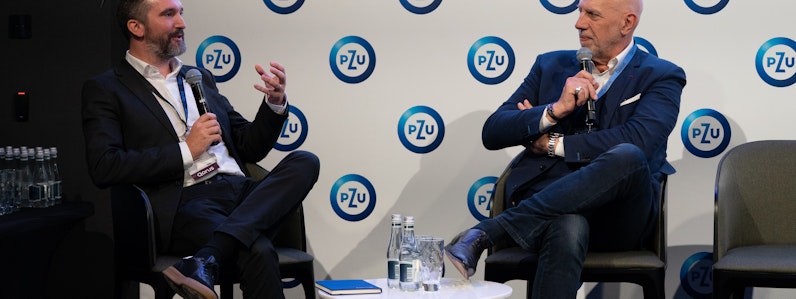
AI-Cloud Disruption in Insurance: Insights from Qorus Reinvent Warsaw
On June 17th, I had the privilege of attending the Qorus Reinvent Forum for Insurance at the PZU Group Headquarters in Warsaw, where the spotlight was firmly on the transformative power of artificial intelligence (AI) in the insurance sector. As someone with a background in IT services, I have witnessed firsthand the profound disruptions that AI is bringing to our industry. This event provided a platform for thought leaders to share their insights on how AI is reshaping our workforce, technology, and operational efficiencies.
Key Takeaway 1: AI as an Augmenter of Human Capability
One of the most compelling discussions I had was with Jean Marc Pailhol (Chief Officer Global Strategic Partnerships at Allianz), who emphasized that AI is not here to replace human agents but to augment their capabilities. Despite the evolution of distribution models in insurance—such as embedded insurance and direct-to-consumer approaches—large insurers continue to rely heavily on human agents within their partner networks. This reliance presents a unique challenge: how can these partners modernize their businesses to embrace disruptive technologies and enhance efficiency?
Another example of the need for AI augmentation was from the Taiwanese health insurance market, where workforce participation has plateaued. However, the number of health insurance claims is projected to surge due to an aging population. The only viable solution to manage this increase is through significant productivity improvements within the existing workforce, driven by AI-enhanced processes and platforms. This highlights the critical role AI will play in enabling insurers to meet rising demands without a proportional increase in workforce size.
Moreover, research indicates that companies leveraging AI can see productivity gains of up to 40%. This is particularly relevant in the insurance sector, where operational efficiency is paramount. By automating routine tasks and utilizing predictive analytics, insurers can free up human agents to focus on more complex, value-added activities, ultimately enhancing customer service and satisfaction.

Key Takeaway 2: The Disruption from Smaller Insurtech Entrants
Another significant theme that emerged was the disruptive impact of smaller entrants in the insurtech space. While we anticipate ongoing mergers and acquisitions (M&A) and consolidation within the industry, larger insurers often struggle to innovate at scale. The persistence of legacy IT systems, scattered data environments, and the heavy burden of compliance create substantial barriers to adopting new technologies.
According to a recent McKinsey report, nearly 80% of insurance executives believe that their organizations are not fully prepared for the digital transformation required to compete with insurtechs. This gap presents a critical opportunity for large insurers to rethink their strategies. Despite these challenges, large insurers possess invaluable assets: a vast client base and the scale of their operations. To leverage the AI revolution effectively, they must focus on modernizing their IT environments. This includes simplifying operations, reducing costs, and modernizing legacy applications and systems through the increased adoption of cloud technologies augmented with agentic AI. By doing so, they can create a robust platform for innovation.
Additionally, the rise of open insurance models, where data is shared across platforms, is reshaping the competitive landscape. Large insurers can capitalize on this trend by partnering with insurtechs to co-create solutions that enhance customer experiences and streamline operations. This collaborative approach not only fosters innovation but also allows traditional insurers to remain relevant in a rapidly evolving market.
Moreover, for large insurers to truly harness the power of AI, a shift towards centralization may develop. Consolidating their distributed operating models will enable them to innovate at scale across their enterprises, ensuring they remain competitive against agile market disruptors. Centralized data management systems can facilitate better decision-making and faster implementation of AI-driven solutions, ultimately leading to improved operational efficiency.

Conclusion
The insights shared at the Qorus Insurance Innovation event underscore the urgent need for the insurance industry to embrace AI as a catalyst for transformation. By augmenting human capabilities, modernizing legacy systems, and centralizing operations, insurers can position themselves to thrive in an increasingly competitive landscape. As we navigate this AI-driven future, collaboration and innovation will be key to unlocking new opportunities and enhancing customer experiences.
As we move forward, it is imperative for insurers to not only adopt AI technologies but also to foster a culture of innovation within their organizations. This will require investment in talent, training, and technology to ensure that they are not just participants in the AI revolution but leaders in shaping its future.
I look forward to continuing this conversation and exploring how we can collectively drive the insurance industry forward in the age of AI.
Let’s embrace this disruption and turn challenges into opportunities for growth and innovation.
For a deeper discussion around our cloud strategy, please contact either me or Stuart Maltas:
Stuart Maltas, Global Insurance Industry Cloud Leader at NTT DATA Inc.
Simon Ruelens, Vice President of Cloud Practice, Europe
Subscribe to Our Newsletter
Get the latest insights about Global solutions for leading insurers on your email



